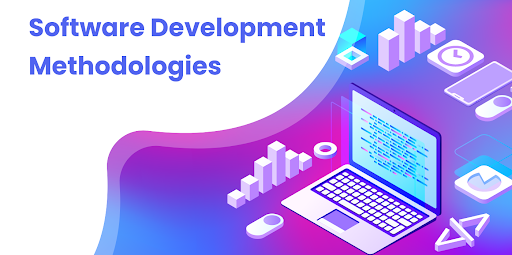10 Top Software Development Methodologies
Are you a software development company looking to lower costs, boost efficiency, and develop effective software products? If yes, read on.

Top Software Development Methodologies
It's no secret that picking the right software development
methodology can help you do these things. There are numerous software
development processes utlised that offer different ways to attain the desired
result within a limited time.
In this article, we are going to define and evaluate the
top 10 methodologies that the majority of the
companies are using to
develop a custom enterprise software solution. Once you know about the top procedures, you can pick the one that works best for your business.
What is a Software Development Methodology?
A software development methodology consists of structural
processes that define how the software development company creates new software
products. This methodology provides a platform for software developers to work
together as a team.
Top 10 Software Development Methodologies
1. Agile Methodology
Agile development is the most popular software development
methodology. This methodology
is a conceptual framework to embark software project. Its primary objective is
to minimize the risk by creating software in a short span. The agile software
development methodology is specially designed to meet the emerging needs of
today's world by incremental development. This type of software development
helps in creating software with a limited or no risk of bugs.
2. Black Box Testing
Black Box Testing Method is also known as Behavioural
Testing. This software testing method helps in finding the error for incorrect
functions, performance errors, and termination errors. The primary goal of the
black box testing method is on the functionality of the system. Black box
testing is of two types i.e. functional and non-functional. This testing
methodology is effective for complex applications. It usually finds errors at
an early stage of testing.
3. Waterfall Software Development Methodology
Created by Dr. Winston W. Royce in 1970, the waterfall
model is the most popular software development methodology. This approach is
linear and consists of numerous stages such as requirements, design, implementation, verification,
and maintenance.
As this methodology is easy to understand, it is popular
for teams with limited experience in software design. Same as a waterfall flowing in one direction; you
can't go back in this approach. Undoubtedly, this approach is non-flexible.
4. White Box Testing
White Box Testing is also known as glass box testing and
is the opposite of black-box testing. This
software development methodology requires the tester to have enough knowledge
of programming. In this approach, the tester needs to choose inputs and determines
the outputs.
This testing method is easily automated and helps in
optimizing the code. But, it is a complex method and quite time-consuming for
large software applications.
5. Scrum Development Methodology
Scrum Development Methodology is an iterative software
development framework to manage the development of products. In this approach,
a software development team works as a unit so this methodology is flexible.
Scrum software development methodology follows an evidence-based empirical
approach.
This
methodology is suitable for smaller software projects.. This software development
method is specially designed for teams having three to nine members to finish the project in just
two weeks.
6. Prototyping Model
The prototyping model is one of the most popular SDLC
(Software Development Life Cycle) models. This model is suitable when project
requirements are explained in detail before starting the project. The prototyping model has two types i.e. rapid throw-away prototyping and
evolutionary prototyping.
Rapid throw-away prototyping involves exploring ideas and
getting customer feedback.
The evolutionary prototyping is incrementally refined based on customer
feedback.
7. Rapid Application Development Model
The rapid software development methodology is similar
to rapid prototyping. Numerous phrases are involved in this model including data modeling,
business modeling, application generation, process modeling, testing, and
turnover. This methodology provides quick and
high-quality results. The primary objective is to enhance the software
development process through active user participation.
8. Feature-Driven Development
The
feature-driven development methodology is suitable
for large teams working on object-oriented technology. This method blends
numerous software development practices into a single unit. The primary
objective of this process is to organize software development around its
features and develop products faster. This approach doesn't work for smaller
teams because of its complexity.
9. Rational Unified Process Methodology
This approach divides the software development process into four phases
including analysis, design, implementation, and
testing. Its lifecycle consists of important
phases such as inception, elaboration, construction,
and transition. The primary objective of this
methodology is to get desired results in a limited time with the help of other
popular software development methodologies.
10. Lean Software Development Methodology
The lean software development methodology is specially
designed to create software solutions that are easy to modify. This approach is
flexible and focuses on creating software within a limited budget. This approach follows the core
Agile Manifesto principle. Software developers can deliver more functionalities
in a short period of time leveraging lean methodology.
Final Words
Software development methodology provides an intuitive
approach for developing software products. Choosing the right approach depends
on your project requirements, budget, experience, and goals.












No comments
Note: Only a member of this blog may post a comment.